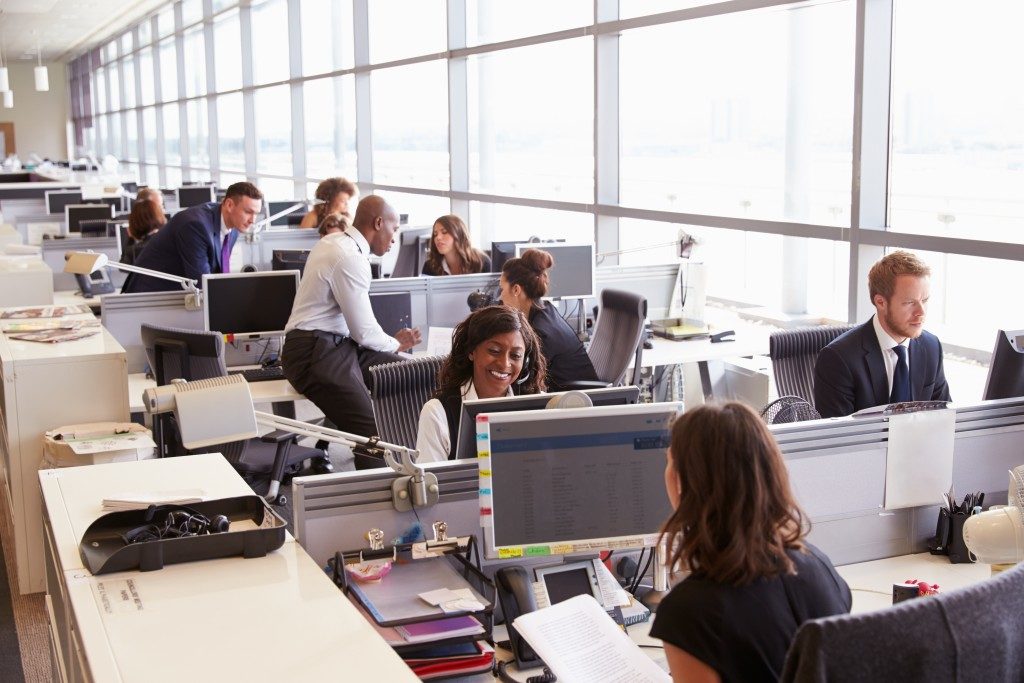Almost every company now had shifted into the open-office layout in their workplaces. It promised better collaboration, greater transparency, and a fun, free atmosphere, just like in the big tech companies today, so everybody jumped into the bandwagon. The thing is, as this design concept promised rewards, it received a lot of backlash. Precisely because it killed the very thing most important in the organisation: productivity. Here are some of the ways it did and how you can solve these ills of open-plan office:
There’s too much noise.
Without barriers, noise floats around the room freely. It comes in different forms. The touching of co-worker’s shoes against the hardwood floor. The tapping of keyboards. The distant chattering and laughing of a team brainstorming. The buzzing of the air conditioning unit. There’s just too much noise in an open-plan office. Which makes it hard to concentrate and accomplish anything. How do you handle this in terms of design? Well, if you could replace hard floor surfaces with softer materials, like carpets, that would significantly reduce the unnecessary sounds. Consider drop ceilings and wall treatments that absorb sound. These materials come in different colours and shapes so you won’t have to worry about sacrificing aesthetics in your office. Incorporate plants too as these can also muffle noises.
There’s little to no privacy.
People in open-plan offices always have an audience; either colleagues who are secretly eyeing their co-workers or bosses who are hovering around their team. So every peek at someone’s personal Facebook profile or an online video of cats purring, it’s seen. While you may think this is a step towards better productivity, with employees not wasting time or energy on stuff unrelated to work, this can also raise a sense of threat to employees. For sure, you know well that the thought of being watched elicits a not-so-comfortable feeling. When your team feels like they’re always supervised, perhaps micromanaged by you, it doesn’t build trust in any way. It breaks rapport, which can then affect how they do their jobs — perhaps making them insecure and unsure about how to accomplish things. How do you address this? Dedicate spaces for privacy. Small work pods, for instance. Furnish them with comfortable, affordable office furniture.
There’s too much collaboration.

Open-plan office promoted collaboration, but it became too much of a good thing. In collaboration, people who asked for help from their colleagues performed well. Those who were asked of help suffered a decline in productivity. That’s because switching from helping others, and then returning to their tasks creates great mental stress. An employee would need to familiarise themselves with the details of the job they’re doing every time they go back to it. In this case, what you have to do is assign a space and a time for collaboration and personal work. You may also encourage ‘visual signals’ for do-not-disturb status. For instance, headphones on means an employee can’t be distracted unless it’s an emergency.
Bringing Productivity Back in Open-Plan Office
The open-plan office may have caused productivity to slide down, but with some adjustments, you can bring it back up. Just be aware of the pitfalls of this workplace design and be sensitive to your employees’ needs.




